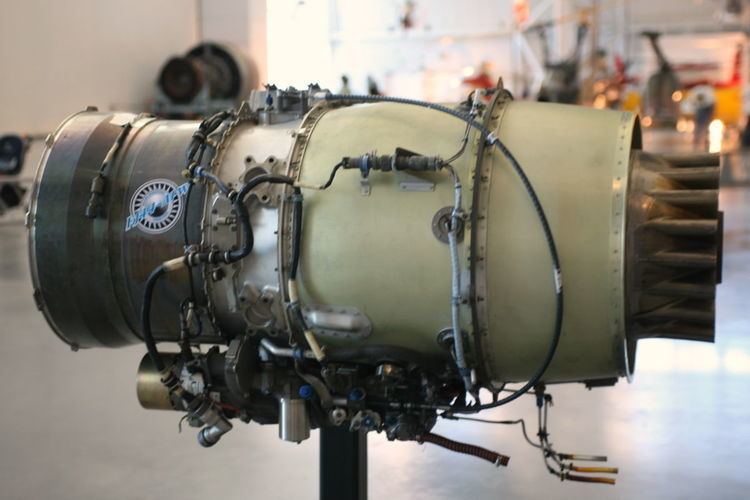 | ||
The Williams FJ44 is a family of small, two-spool, turbofan engines produced by Williams International/Rolls-Royce for the light business jet market. Until the recent boom in the very light jet market, the FJ44 was one of the smallest turbofans available for civilian applications. Although basically a Williams design, Rolls-Royce was brought into the project, at an early stage, to design, develop and manufacture an air-cooled high-pressure (HP) turbine for the engine. The FJ44 first flew on July 12, 1988 on the Scaled Composites/Beechcraft Triumph aircraft.
Contents
The Williams FJ33 is a smaller engine based on the basic FJ44 design.
Design and development
Production started in 1992 with the 1900 lbf (8.45 kN) thrust FJ44-1A, which comprises a 20.9 in (531 mm) diameter single stage blisk fan plus a single intermediate pressure (IP) booster stage, driven by a 2 stage low pressure (LP) turbine, supercharging a single stage centrifugal high pressure (HP) compressor, driven by a single stage uncooled high pressure (HP) turbine. The combustor is an impingement cooled annular design. Fuel is delivered to the combustor through an unusual rotating fuel nozzle system, rather than the standard fuel-air mixers or vapourisers. The bypass duct runs the full length the engine. Specific fuel consumption at 1900 lbf (8.45 kN) thrust at SLS, ISA is understood to be 0.456 lb/hr/lbf. A derated version, the 1500 lbf (6.67 kN) thrust FJ44-1C has an SFC of 0.460 lb/hr/lbf.
An uprated version, the 2300 lbf (10.23 kN) thrust FJ44-2A, was introduced in 1997. It has a larger 21.7 in (551 mm) diameter fan, with two additional booster stages to increase core flow. Owing to stressing considerations, the centrifugal compressor is throttled-back aerodynamically to a lower HPC pressure ratio than the -1. Other features include an exhaust mixer and an electronic fuel control unit. The 2400 lbf (10.68 kN) thrust FJ44-2C is similar to the -2A, but incorporates an integrated hydromechanical fuel control unit.
Further updates include the 2004 introduction of the 2820 lbf (12.54 kN) thrust FJ44-3A, which is similar to the -2A, but features an increased diameter fan and dual channel FADEC (Full Authority Digital Engine Control) unit. The 2490 lbf (11.08 kN) thrust FJ44-3A-24 is a derated version of the -3A.
In 2005, a new low end version, the FJ44-1AP, was introduced, with a 1965 lbf (8.74 kN) takeoff thrust, 5% better specific fuel consumption, and lower internal temperatures. The -1AP is similar to the -1A, except for a higher pressure ratio fan, a new combustor and LP turbine, a new full length bypass duct/exhaust mixer and a dual channel FADEC.
Released in 2007 was the new 3600 lbf (16.01 kN) thrust FJ44-4, which has a hi-tech fan of larger diameter than the -3 unit. As of March 2010, this engine was only in use on the Cessna CJ4.
Variants
Applications
Source:
